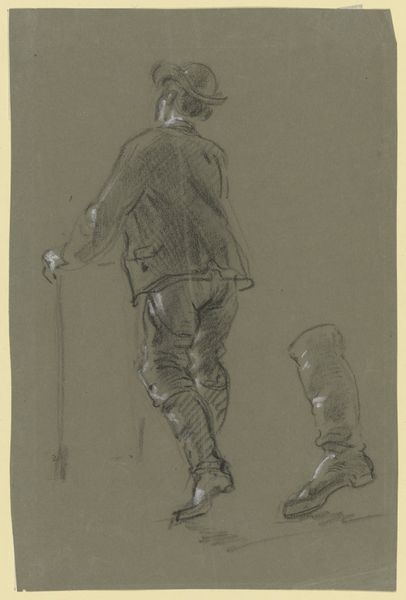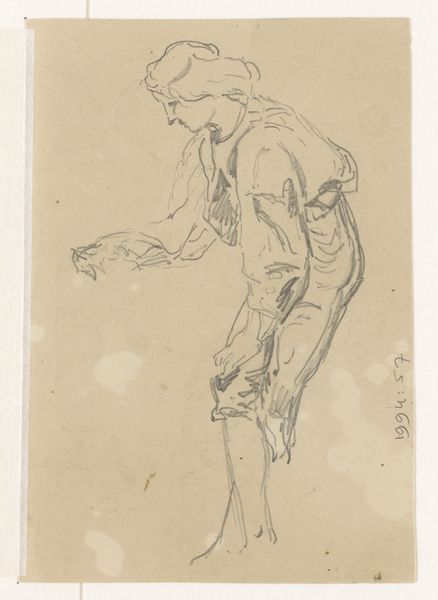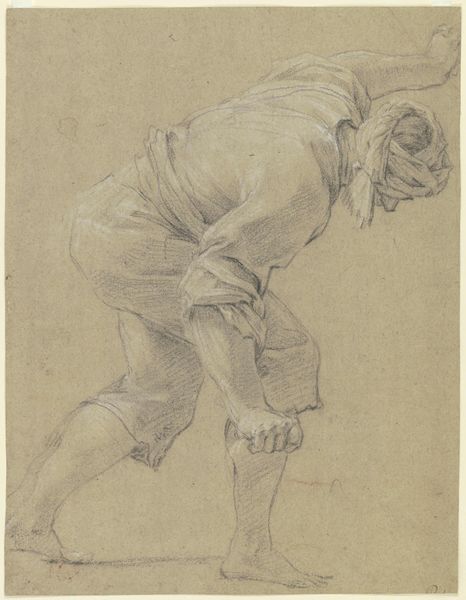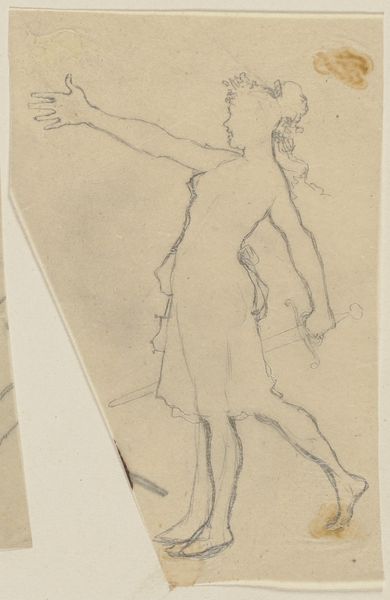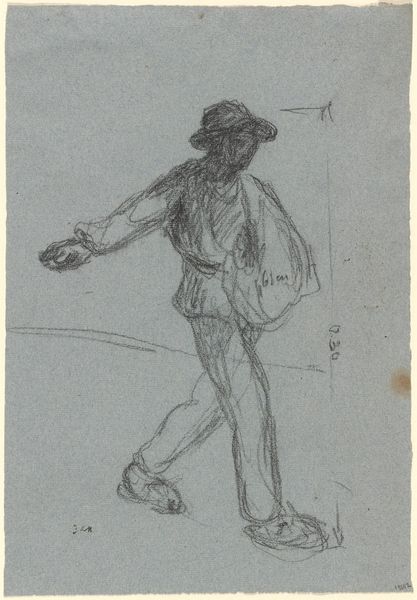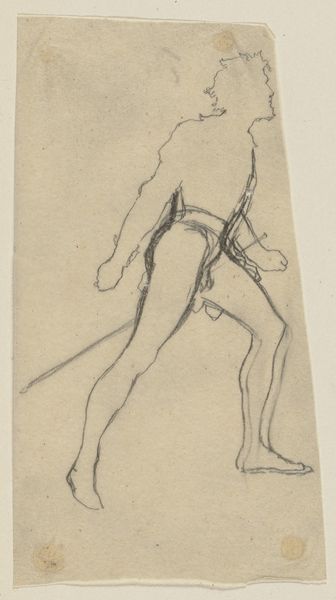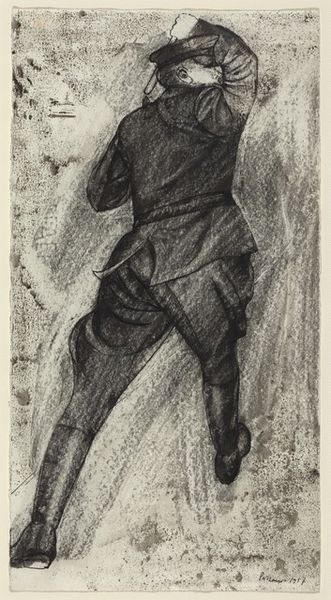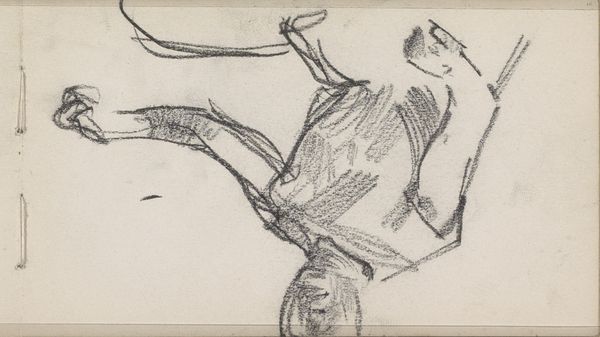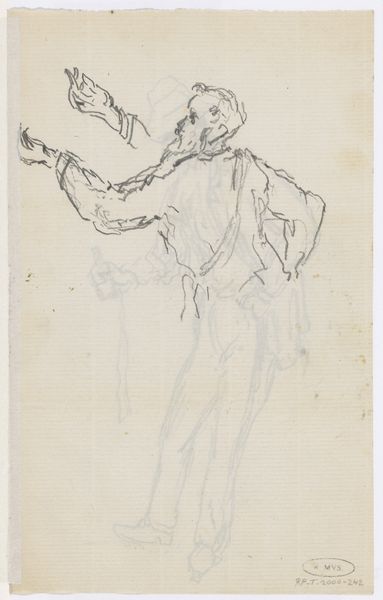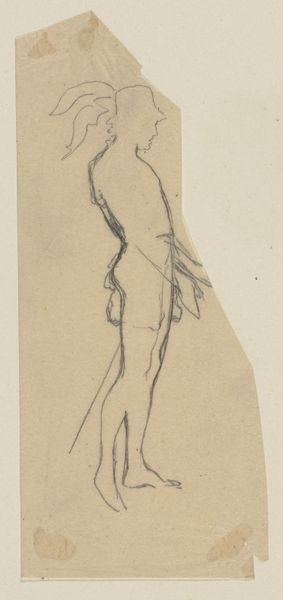
drawing, paper, chalk
#
portrait
#
drawing
#
16_19th-century
#
landscape
#
paper
#
chalk
Copyright: Public Domain
Editor: We're looking at "Ice Skater," a drawing in chalk on paper by Philipp Rumpf, housed in the Städel Museum. The monochromatic palette evokes a sense of wintry stillness. The quick strokes suggest motion. How would you analyze its composition? Curator: The artist’s choice of a single figure set against a largely empty field draws attention to the dynamics of line and form. Note the diagonal thrust established by the figure’s posture. What visual strategies does the artist employ to create depth and volume? Editor: The hatching and cross-hatching on the skater’s clothing suggest a rounded form, while the slight shadow beneath implies the ground. I find the lack of distinct facial features almost unsettling. Curator: Indeed. Consider how the artist renders form through tone and line rather than detailed description. The formal qualities create a dynamic tension. The texture is applied through delicate layering of strokes of the chalk medium and in what relationship do you feel that texture and composition exist? Editor: I think they work to animate what might otherwise be a static image, the figure becomes a mass of controlled motion through repeated marks. Does focusing on these technical elements distract from any narrative the artist might have intended? Curator: Formalism proposes that the artwork's internal structure and aesthetic properties are paramount. It does not reject narratives out of hand. Editor: I see. Thank you for that clarification. Curator: By attending to the interplay of lines, shading, and form, the artist’s purpose is made bare, even without narrative concerns or emotional projections. Editor: I think I understand a new way to look at the drawing now!
Comments
No comments
Be the first to comment and join the conversation on the ultimate creative platform.
